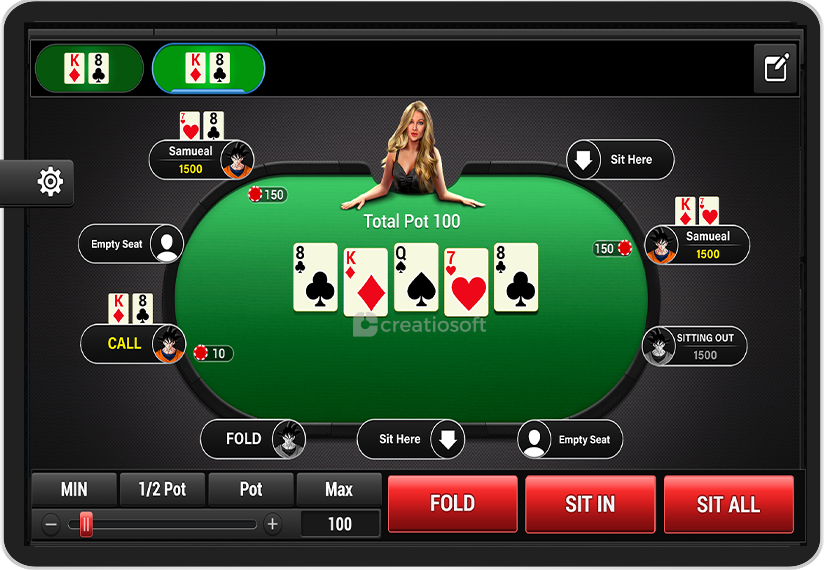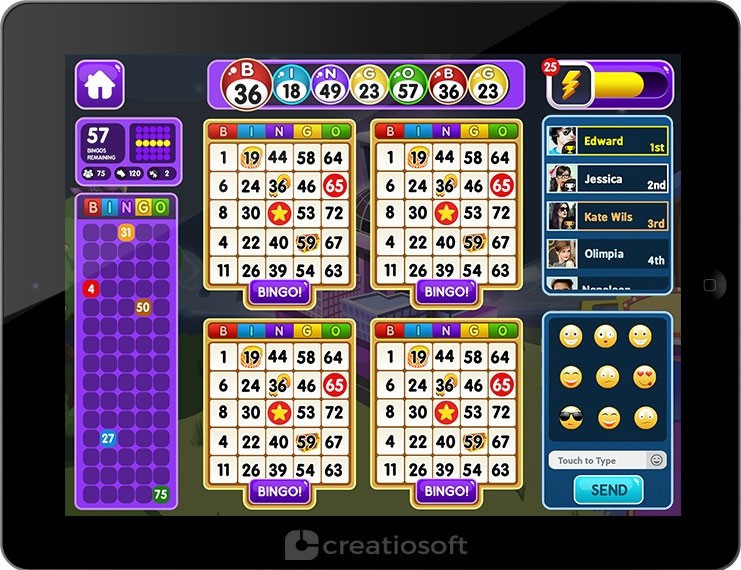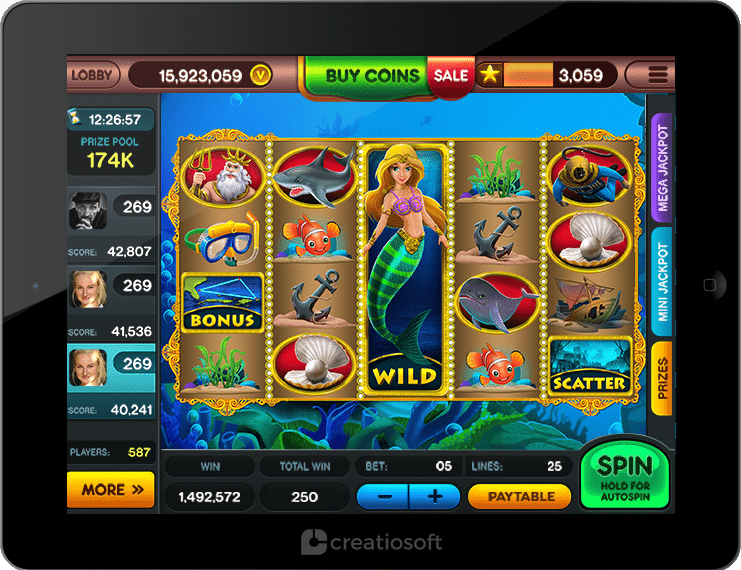The monetization of mobile games is an essential factor that a game development company must consider to make money. With over 400 million smartphone users, the Indian mobile gaming market is expanding. It is predicted to reach $1.3 billion by 2023. Mobile game monetization models include in-app purchases, advertising, sponsorships, and subscriptions. In-app purchases are primarily employed in free-to-play games. It provides players with virtual products, currency, or enhancements.
Advertising produces money by displaying advertisements in-game. But sponsorship entails collaborating with corporations to market their products or services. Subscriptions impose a recurring fee on users to access premium features or content within the game. In order to maximize revenue potential, game producers must analyze their target audience. Only after that they should select the monetization model that best matches the game. You must choose a recognized game development company in India to successfully build and monetize your mobile game.
How to Monetize Your Mobile Game?
We’ll examine each monetization strategy in more detail in the following sections:
1. In-App Purchases:
In-app purchases are virtual items or services a game development company offers within a mobile game or application. Real money can be used to make purchases by gamers. These transactions may include various aspects. It ranges from unlocking additional levels or characters, purchasing in-game currency or stuff, and purchasing ad-free game versions.
Players are often ready to pay for virtual products that improve their gameplay experience. In-app purchases can be a successful revenue approach for the android game development company. There must be a balance between making meaningful purchases and not over-monetizing the game. Otherwise, this can lead to player irritation and poor engagement.
Types of In-app Purchases:
- Consumable In-App Purchases: These are virtual objects that players can buy and use only once. These are additional lives, power-ups, or in-game currency. Once a player has used these items, they must be purchased again if they wish to use them again.
- Non-consumable in-app purchases: These are virtual objects that gamers may buy and keep indefinitely. These can be ad-free editions of the program, new levels or game modes, or more characters or equipment.
- Subscription-Based In-App Purchases: These are virtual products that gamers may access by paying a recurring subscription. It comprises premium content or services within the app, early access to new features, or unique discounts.
In-app purchases are a popular monetization approach for mobile games and applications. They allow the game development company in India to collect income while delivering a free-to-play experience for customers. When used correctly, in-app purchases may be a significant source of money for game producers.
Some mobile games in India have effectively utilized in-app purchases as a business mechanism. Here are a few examples:
- Ludo King: Ludo King is a popular mobile game with in-app purchases. Players can buy money to play more games or emojis to express themselves during the game.
- Candy Crush Saga: Candy Crush Saga is a classic mobile game with in-app purchases. Players can buy more lives, power-ups, and boosters to assist them in going through the levels faster.
- PUBG Mobile: PUBG Mobile is a famous battle royale game with in-app purchases. Players can buy a Royale Pass, which grants them access to unique awards and stuff, or UC (Unknown cash), which can be used to purchase in-game things.
- Clash of Clans: A strategy game that allows users to make in-app payments. Players can buy gems to speed up advancements or acquire resources.
These are just a few scenarios of successful mobile games that monetize using in-app purchases. These games have produced significant cash by allowing players to customize their gaming experience. It is done while providing an enjoyable and engaging experience for their customers.
2. Advertising:
Advertising is a common revenue mechanism for mobile games. In this technique, a game development company displays advertisements within the game to generate cash. Mobile game advertising is a popular monetization approach. It allows game producers to offer their games for free while generating money through commercials.
Advertising is a successful monetization approach. Balancing producing cash and offering a decent customer experience is still critical. Too many advertisements or intrusive ads might turn off gamers, resulting in poorer engagement and revenue in the long run. The android game development company should examine ad placement and frequency to ensure they do not detract from the gameplay experience.
There are multiple types of adverts accessible for mobile games:
- Banner Ads: These are small ads that appear at the top or bottom of the screen during gameplay.
- Interstitial Ads: These are full-screen ads that appear between levels or during natural breaks in gameplay.
- Video Ads: These are ads that players can choose to watch in exchange for in-game rewards or to unlock additional content.
- Native Ads: These are ads that blend seamlessly into the game’s design and user interface, making them less intrusive than other types of ads.
Successful games using advertising in India include:
- Subway Surfers: Subway Surfers is an endless runner game that offers in-app ads to players. Players can watch video ads to unlock characters or get additional coins.
- Temple Run 2: Temple Run 2 is an endless runner game with in-app advertisements. Players can watch video adverts to resurrect their character or gain more cash.
- MPL (Mobile Premier League): MPL is a mobile gaming platform that provides users with various games and competitions. MPL provides both in-app purchases and in-app advertisements as monetization options.
- Teen Patti Gold: Teen Patti Gold is a popular card game in India that provides players with in-app advertisements. Players can earn more cash or unlock new features by watching video advertisements.
3. Sponsorships:
Sponsorships in mobile games are a monetization model. The game development company collaborates with brands or businesses to promote their products or services within the game. It can take the shape of branded in-game material, such as logos or products, or it might take the form of sponsored tournaments or events. To find and approach potential sponsors, game creators should look for firms or brands that naturally fit the genre or target audience of their game and present a partnership proposal describing the benefits of sponsoring the game.
Sponsorships provide authenticity to the game. It also generates income and offers significant exposure for the sponsor’s brand. The key to success is ensuring the partnership resonates with the game’s brand and values. It must also add value to both the android game development company and the sponsor.
To locate and approach potential sponsors, the developers of a game development company in India should research organizations related to their game’s theme or target audience. They can then contact these companies via email or social media. They should emphasize the potential benefits of collaborating with their game, such as improved brand exposure and user engagement.
Successful games that have used sponsorships include:
- 8 Ball Pool: A popular smartphone game that provides participants with sponsored tournaments. Various companies support these competitions, and participating players can win real-world prizes.
- Real Cricket 20: It is a mobile cricket game with sponsored content, such as branded in-game commercials and sponsored events. Several prominent corporations, including Red Bull and Pepsi, have partnered with the game to market their products.
- Carrom Clash: It is a mobile game that features sponsored content. These are branded in-game commercials and sponsored tournaments. Several firms, including Royal Stag and Oyo, have partnered with the game to market their products.
- MPL: MPL is a mobile gaming platform offering sponsored tournaments and events for participants. The platform has worked with several large companies. Amazon and OnePlus are examples they have utilized to market their products and services within the game.
4. Pricing Models
Choosing the correct pricing plan is critical for an android game development company. The free-to-play, pay-to-play, and subscription-based models each have advantages. Also, the best option will be determined by the game’s unique traits and target audience. To maximize income and user engagement, developers should thoroughly analyze their alternatives and make an informed conclusion.
Types of Pricing Models:
- Free-to-play (F2P ): This price plan allows players to download and play the game for free without making any upfront payments. Revenue for the game development company is produced via in-app purchases or advertising. In-app purchases may consist of virtual cash, exclusive products, or premium features that improve the user’s gameplay experience. Because it has a low barrier to entry, this approach is suitable for casual games and those with a large audience.
- Pay-to-play (P2P): These are games that demand a one-time payment from the player before they can be downloaded and played. These games often charge a one-time cost and do not include in-app purchases or advertising. Once a player has paid for the game, they get full access to all of its features and material. This approach is typically utilized for premium games that provide a more immersive and complex gaming experience and are aimed at hardcore players ready to pay a premium for quality.
- Subscription-based models: In this pricing model, customers pay an ongoing price to access the game’s content or features. The game is constantly updated with new content. Users must continue to pay the monthly fee in order to play the game. This concept is prevalent for games with a significant degree of replay value. For example, games that are constantly updated with new material, hugely multiplayer online (MMO) games.
5. Cross-Platform Support:
Cross-platform compatibility is becoming increasingly vital for the game development company. Because gamers access games via many devices and platforms. Developers may expand their game’s reach by providing cross-platform functionality. It can also provide users with a unified gaming experience across many devices.
There are several types of cross-platform support that developers can implement in their games, including:
- Cross-Platform Play: Cross-platform play allows users to compete or collaborate with one another while playing the same game on multiple platforms and devices. For example, the game “Fortnite” enables users to compete against each other while playing on PC, console, and mobile devices.
- Cross-Platform Saves: Cross-platform saves allow gamers to store their progress on one device and begin playing on another without losing progress. This function is very handy for games that need a significant time investment, such as RPGs. For example, the game “Stardew Valley” allows players to store their progress on PC and continue playing on mobile devices.
- Cross-Platform Purchases: Cross-platform purchases enable users to buy items or in-game cash on one device and spend them on another. This functionality is precious for games that employ microtransactions. It allows users to make purchases on their chosen platform. For example, the game “Clash of Clans” enables users to buy gems on iOS and utilize them on Android devices.
- Cross-Platform Messaging: Cross-platform messaging allows players to communicate with each other regardless of the device or platform they are using. This feature is handy for games that require collaboration or communication, such as MMOs. For example, the game “World of Warcraft” allows players to communicate with each other regardless of whether they are playing on PC or Mac.
Conclusion:
The Indian mobile gaming market has enormous potential for the game development company wishing to monetize their games. We covered the many monetization techniques available, such as in-app purchases, advertising, and sponsorships, as well as pricing models, such as free-to-play, pay-to-play, and subscription-based models.
To optimize a game’s monetization strategy, a game development company in India needs to examine elements such as target demographic, game type, and market rivalry. They should also stay current on the newest trends and best practices in mobile game monetization, such as delivering appealing in-app purchases and utilizing successful advertising methods.
The Indian mobile gaming market is quickly expanding, and the android game development company has an excellent opportunity to capitalize on this expansion. In this fascinating and dynamic sector, developers may create significant cash and grow a devoted user base with the appropriate plan and approach.
FAQ’s:
Q: What are some practical ways to monetize a mobile game?
A: There are various ways to monetize a mobile game by the android game development company. This includes in-app purchases, adverts, sponsorships, subscriptions, and premium features. The optimal strategy for your game will be determined by its genre, target audience, and revenue objectives.
Q: How can I ensure that my mobile game monetization strategy is successful?
A: To ensure the success of your mobile game monetization plan, you should concentrate on giving value to your consumers and generating a great user experience. You should also analyze your data on a regular basis to track your performance and improve your plan accordingly.
Q: What are some common mistakes to avoid when monetizing a mobile game?
A: When it comes to monetizing a mobile game, common pitfalls to avoid include overloading consumers with too many adverts or in-app purchases, ignoring the user experience, and failing to test and optimize your monetization plan.
Q: How can Creatiosoft help me optimize my mobile game’s monetization strategy?
A: Creatiosoft can assist you with optimizing the monetization strategy of your mobile game by providing industry insights and best practices, running A/B testing to discover the most successful monetization tactics for your game, and tracking your data to make data-driven choices regarding your approach. They can also provide continuous assistance to guarantee your strategy’s effectiveness over time.
Q: How long does it typically take to monetize a mobile game?
A: Monetizing a mobile game might take anything from a few weeks to many months, depending on the complexity of your game and the monetization tactics you choose to employ. You can speed up the monetization process using Creatiosoft.
















